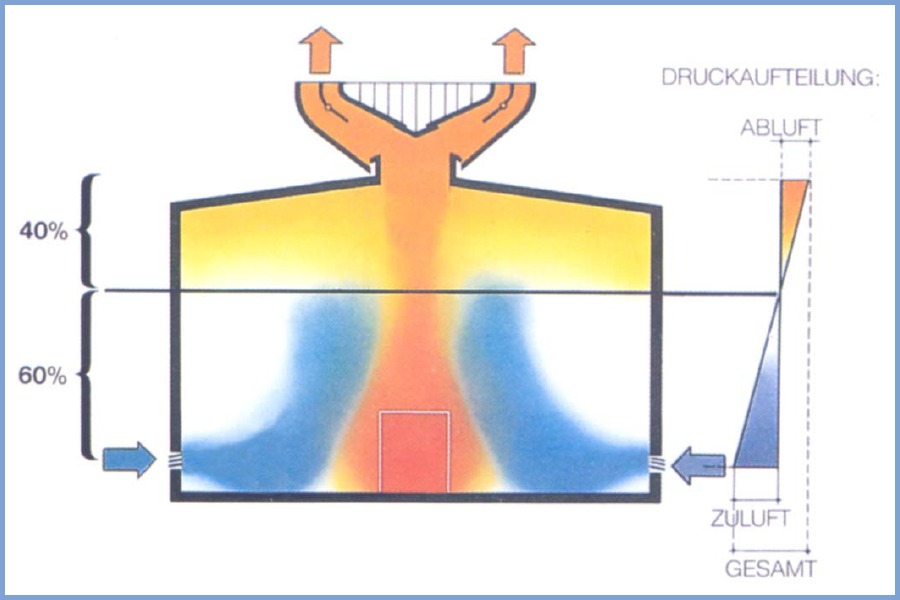Natural ventilation
Natural ventilation is based on the principle that the difference in pressure between the air inlet and exhaust air vents in a building allows natural air exchange to take place. The pressure differences arise due to:
- the buoyancy forces in the building caused by differences in density between the air in the building and the outside air, and the difference in height between the air inlet and exhaust air vents,
- the air currents in the building.
Accordingly, the volume of air flowing through the building depends on the surplus heat in the building – caused by the convection heat that is emitted into the room air (internal cooling load), the external cooling load (transmission through insolation), wind speed, wind direction and building geometry.
The volume of air can be controlled and maintained within fixed parameters according to this principle.
Fig. 1 and Fig. 2 show a simplified natural ventilation scheme. The neutral plane is located where internal and external pressure is equal. Vents are not effective at this point. Above the neutral plane, internal pressure is higher than external pressure, and this is where the exhaust air vents are located. Underneath the neutral plane, external pressure is higher than internal pressure, which is why the fresh air vents are located here.
When designing a natural ventilation system, it is necessary to predetermine the height of the neutral plane and ascertain the proportion of pressure difference that is available to overcome flow losses in the air inlet vents and the proportion that will be used by the exhaust air vents.
It is always necessary to calculate the position of the neutral plane.
You will find explanations of technical terms in our 'Industrial Ventilation' compendium, which is available as a PDF file in our Downloads section.





